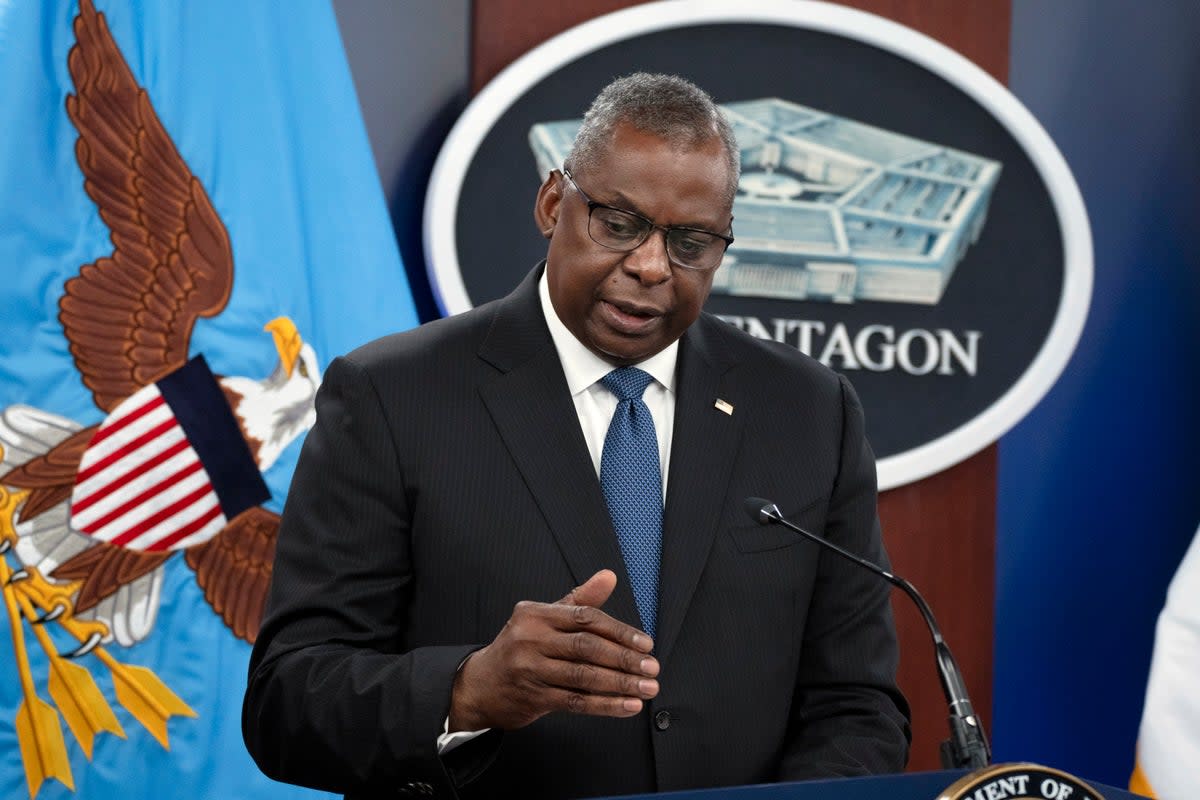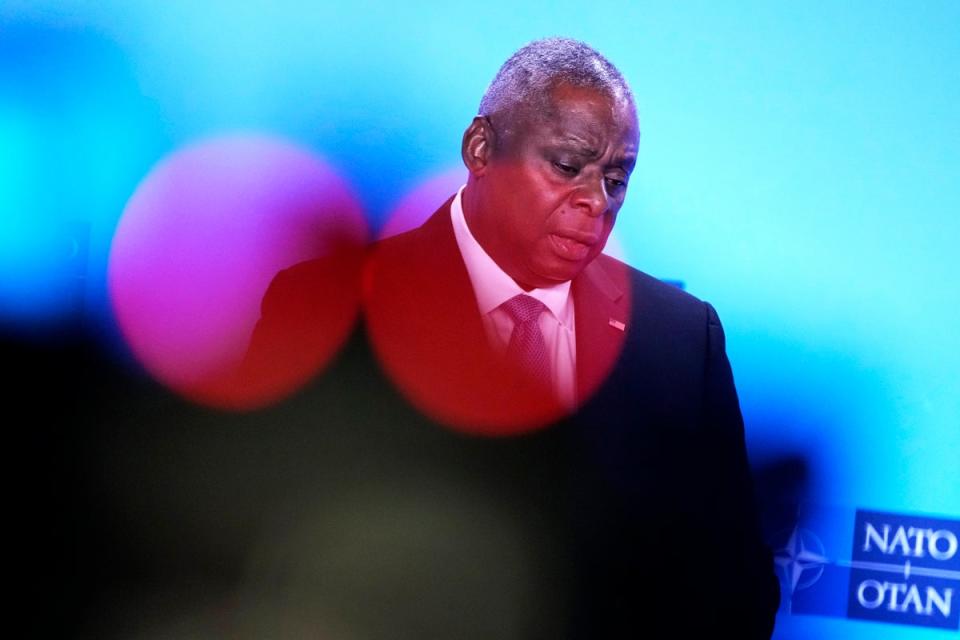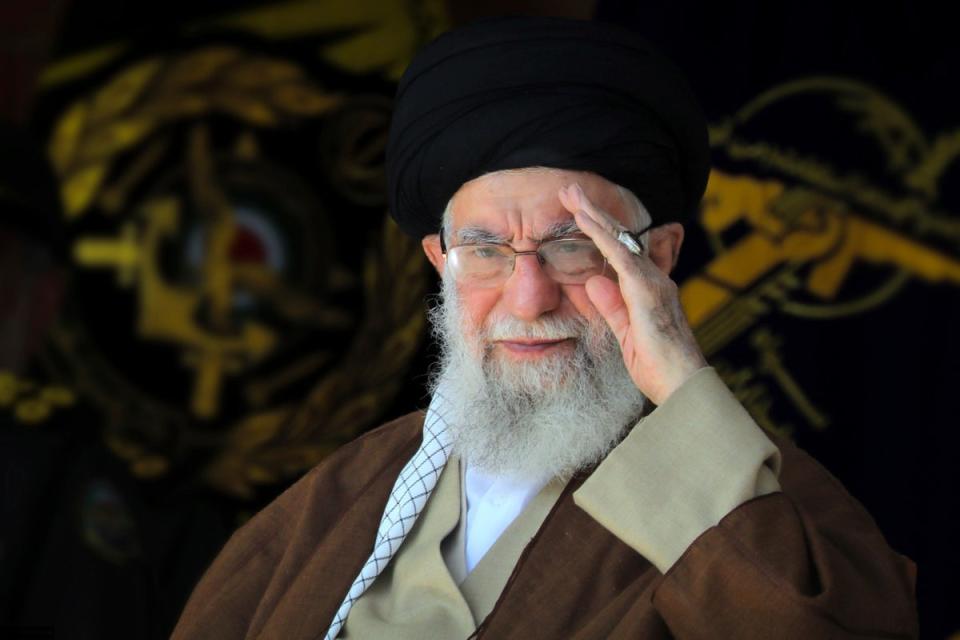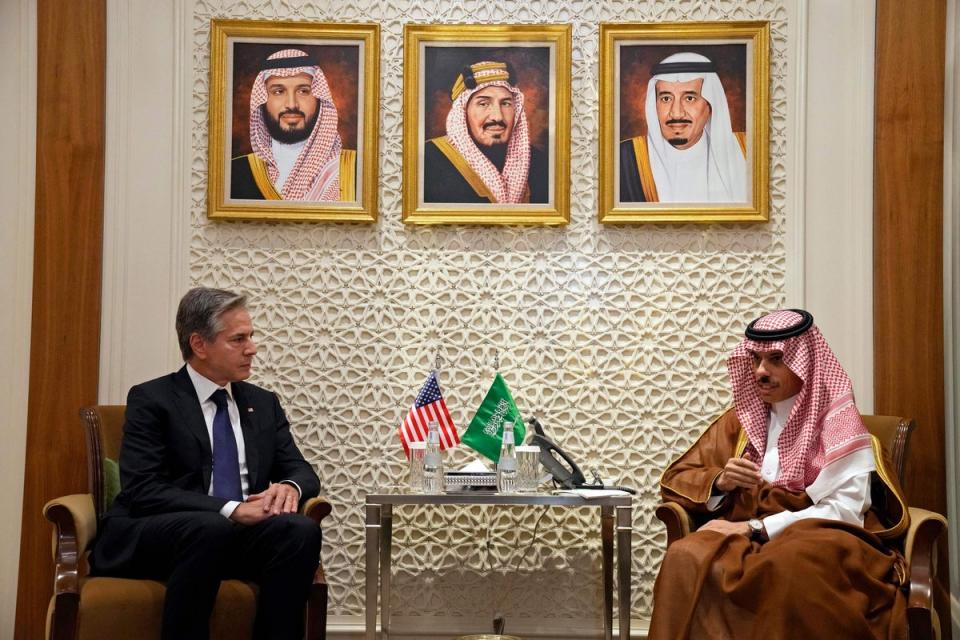Are the US strikes on Syria linked to Israel’s war in Gaza?

- Oops!Something went wrong.Please try again later.
- Oops!Something went wrong.Please try again later.
Two US fighter jets struck weapons and munitions dumps in Syria on Thursday, with Washington saying it was in retaliation to attacks by Iranian-backed militias on their own forces across the Middle East.
US defence secretary Lloyd Austin said the attacks were “separate and distinct from the ongoing conflict between Israel and Hamas” and that they were carried out solely “in self-defence”.
But western officials supporting Israel restated their fears of regional escalation on Friday.
Charles Michel, the president of the European Council, said EU leaders were worried that Iran could be drawn into a wider conflict “either directly or through proxies” and that this would “make the situation more difficult”.
What do we know about these strikes?

The facilities hit by the US were used by the Islamic Revolutionary Guard Corps (IRGC), the primary branch of the Iranian Armed Forces, according to US president Joe Biden.
The strikes, carried out by a pair of F-16 US air force fighters, took place on Friday at around 4.30am local time (1.30am GMT) near Abu Kamal, a town on the border with Iraq.
At least four militias are known to have strong affiliations with Iran that are located in Syria, using the Quds Force as their contact point, according to the Wilson Centre. It is estimated those groups comprise between 18,000 and 28,000 fighters.
Iraq is the second-most populated with Iranian-backed militias, all of whom have strong ties to Tehran. The three militias mainly operating in Iraq number up to 75,000 militants.
Since 17 October, US and coalition troops have been attacked at least 19 times in Iraq and in Syria, according to the Pentagon, including three new ones Thursday. Air Force Brig. Gen. Pat Ryder said 21 US personnel were injured in two of those assaults that used drones to target al-Asad Airbase in Iraq and al-Tanf Garrison in Syria.
In a statement, the US defense secretary, Lloyd Austin, said the "precision self-defense strikes are a response to a series of ongoing and mostly unsuccessful attacks against U.S. personnel in Iraq and Syria by Iranian-backed militia groups that began on October 17."
These attacks were carried out from distance with rockets and drones. None have involved close-combat fighting, according to a log recorded by the Washington Institute.
They include multiple attacks on the Al-Tanf US airbase in Syria near the border with Iraq and Jordan, as well as the Green Village base further east, according to claims made by the militias.
The al-Asad airbase in western Iraq is the most frequently targeted US position; it has allegedly been attacked six times since 18 October.
The US response on Thursday, again an attack conducted from afar, was the first response of its kind.
At least four attacks, two in Syria and two in Iraq, took place on 26 October before the US airstrikes, according to the militias. If true, this would consitute the joint-most prolific day of attacks since October 17.
Is this linked to the Israel’s war on Hamas in Gaza?

Iran is an outspoken supporter of Hamas. It has constantly threatened to retaliate to the Israeli bombardment of Hamas-held Gaza by conflagrating tensions into a regional war.
On the other side, the US is a staunch supporter of Israel.
“There is an unprecedented level of intimacy between the two,” David Makovsky, an expert on Arab-Israeli relations, told The Independent, citing the fact that Mr Biden became the first president in US history to visit Israel in a time of war.
Aside from hinting at a direct attack on Israel by its proxy force Hezbollah in southern Lebanon, the US has been one of the main targets of Iran’s escalating rhetoric, including threats of retaliation.
On Thursday, Iranian foreign minister Hossein Amirabdollahian said at the United Nations that if Israel’s offensive against Hamas did not stop, the United States would “not be spared from this fire”.
Could this cause an escalation?

Experts remain uncertain that Iran’s rhetoric is anything more than just that.
“They want to push it so far, rattle everyone’s cage, all under the assumption that no-one will do anything,” Ali Ansari, a professor of Iranian studies at St Andrews University, told The Independent.
“The minute there is this anxiety about a wider escalation, or that Iran may be a target, there has been a clear distancing.”
Others pointed to the domestic unrest simmering in Iran and their novel dialogue with Saudi Arabia, who refused to communicate until a Chinese-brokered detente in March, as reasons to suggest escalation is unlikely.
"These strikes were in self defense," John Kirby, the White House national security spokesperson, told US TV on Friday. Asked if Iran will retaliate, Kirby said, "It's not uncommon for them to strike back. If they do, we'll absolutely do what we have to do to protect our troops and our facilities."
"We'll be ready for that," he added.
Nonetheless, predicting what could happen in the Middle East is a fool’s errand.
On 29 September Jake Sullivan, the US national security advisor, said the region was “quieter today than it has been in two decades”.
Eight days later, the militant group Hamas broke through the Gaza border fence into Israel and killed more than 1,400 people, changing the status quo of the region forever.

